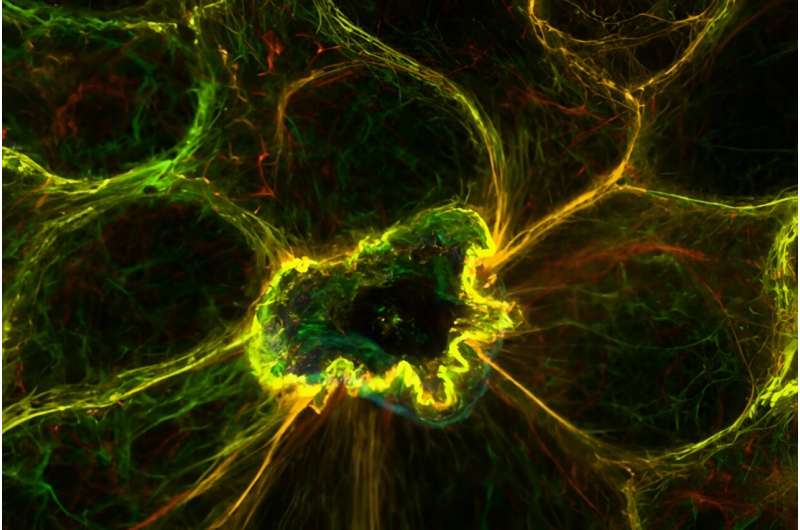Researchers from Kyushu University in Japan have made a groundbreaking discovery about the calcium-based mechanism that plays a crucial role in the removal of dead cells from epithelial tissues. This discovery sheds light on how our bodies protect themselves from injury and disease. The study, published in Current Biology, reveals the intricate process of how neighboring cells work together to push out damaged or dying cells, maintaining the integrity of our vital epithelial barriers.

Calcium’s Pivotal Role in Cellular Cleansing
The human body is a remarkable machine, constantly working to maintain its delicate balance. One crucial aspect of this process is the disposal of dead or dying cells, a task that is essential for preserving the integrity of our epithelial tissues – the vital barriers that cover our skin and internal organs.
According to the study, the team from Kyushu University has discovered a fascinating calcium-based mechanism that plays a key role in this cell disposal process. Using advanced imaging techniques and genetically engineered epithelial tissue cultures, the researchers were able to observe the intricate dance of neighboring cells as they work together to remove damaged or apoptotic cells.
The study revealed that when an epithelial cell becomes damaged and undergoes apoptosis, or programmed cell death, the surrounding cells respond with a significant spike in calcium levels, particularly near the membrane regions interfacing with the dying cell. This intriguing phenomenon, dubbed the “calcium response in effectors of apical extrusion (CaRE)”, is the linchpin in the efficient removal of these unwanted cells.
The Desmosome Connection: Calcium’s Role in Cell Adhesion
Delving deeper into this newly discovered mechanism, the researchers examined the role of IP3 receptors, proteins that regulate calcium ion levels within cells. They found that inhibiting the activity of these receptors or removing their associated genes completely prevented the expulsion of apoptotic cells.
Further analysis using advanced electron microscopy revealed that a specific subset of IP3 receptors, particularly those located near desmosomes, play a crucial role in CaRE. Desmosomes are cell adhesion structures that form strong connections between cells, acting like buttons that hold them together. These structures are especially important in tissues like skin and organ linings, helping to maintain the structure and stability of our body’s tissues.
By ensuring neighboring cells adhere tightly, desmosomes play a pivotal role in the removal of apoptotic cells. The study found that the activation of IP3 receptors near desmosomes is necessary for triggering the contraction of the actomyosin complex, a group of proteins that help cells change shape and move, facilitating the extrusion of dying cells.
Implications for Understanding and Treating Epithelial Disorders
This groundbreaking study not only advances our understanding of how our bodies maintain a healthy epithelium but also holds the potential to impact the treatment of various epithelial-related disorders.
As Professor Junichi Ikenouchi, the lead researcher, explains, “Our findings provide valuable insights into understanding diseases caused by epithelial barrier disruption, such as atopic dermatitis and inflammatory bowel disease, and may contribute to the development of new preventive measures and treatments for chronic inflammation.”
While this study was conducted on cultured cells, the team notes that further analysis of the CaRE mechanism is needed to determine its function in living organisms, potential variations between different organ tissues, and the involvement of other factors. Nevertheless, this discovery represents a significant step forward in unraveling the complex mechanisms behind epithelial barrier maintenance, which plays a crucial role in safeguarding our overall health and well-being.
